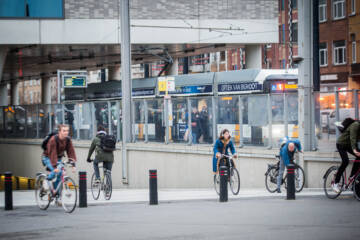Building a Greener Future: Sustainability in the Construction Sector
In today's rapidly urbanizing world, the construction sector plays a pivotal role in shaping the environment and, consequently, our future. However, traditional construction practices are often resource-intensive and environmentally detrimental.
The industry is increasingly embracing sustainability to reduce its ecological footprint. This blog delves into the key aspects of sustainability in construction.
The Imperative for Sustainable Construction
The construction industry is one of the largest consumers of natural resources and a significant contributor to greenhouse gas emissions. Buildings account for nearly 40% of global energy consumption and CO2 emissions.
With urban populations expected to grow by 2.5 billion by 2050, the demand for new infrastructure is inevitable. Therefore, adopting sustainable construction practices is not just beneficial but essential for ensuring a livable planet for future generations.
Key Principles of Sustainable Construction
Where does sustainable construction start? What are the domains we can and should work on?
- Energy Efficiency: Reducing energy consumption through design innovations and efficient building systems is paramount. This includes using advanced insulation materials, high-performance windows, and incorporating renewable energy sources like solar and wind power.
- Resource Efficiency: Sustainable construction prioritizes the use of renewable, recyclable, and locally sourced materials. It also emphasizes waste reduction through better planning and the use of prefabricated components, which minimize onsite waste. A madaster can play a crucial role in documenting resources.
- Water Conservation: Implementing systems that reduce water usage, such as low-flow fixtures, rainwater harvesting, and greywater recycling, helps conserve this precious resource.
- Healthy Indoor Environment: Ensuring good indoor air quality through proper ventilation, using non-toxic materials, and maximizing natural light can significantly improve occupant health and well-being.
- Sustainable Site Design: Thoughtful site selection and design can minimize environmental disruption and integrate the building seamlessly with its natural surroundings. This includes preserving existing vegetation, promoting biodiversity, and reducing soil erosion.
Sustainability in the construction sector is not a mere trend but a necessity. As we build the cities of tomorrow, adopting sustainable practices will be crucial in mitigating environmental impact and enhancing quality of life. Through innovation, collaboration, and a steadfast commitment to green principles, the construction industry can lead the way in creating a sustainable future.
As Living Tomorrow, we have a broad variety of partners in the construction sector that can fulfill this role.
Let's build not just for today, but for a better, greener tomorrow.
Latest insights & stories

ROAD SAFETY
Since 2018, the number of traffic casualties in Flanders has risen again. Currently, the figures are stagnating, but the risk of accidents with injuries remains high for vulnerable road users in Flanders. And that while traffic should be safe for all users and modes. We want to change this by focusing on transparent policy, training on safe behavior, infrastructure improvements, legislation and enforcement.

What is needed for a more circular construction sector? Insights from Sien Cornillie, Circularity expert at NAV
NAV, or "Netwerk Architecten Vlaanderen," is a professional organisation for architects in Flanders. It offers various services including professional development and advocacy for the architectural sector. NAV also fosters networking opportunities and provides advice on legal, technical, and management aspects. The network is currently working on a position paper on circularity. We sat down with Sien Cornillie, an expert on circularity and energy at NAV. This interview reflects her own opinion.

A Global Movement: The World Unites in a Pink Pledge for Clean and Sustainable Water
5,000 participants. 32 countries. €30,000 funds raised. And that's just the beginning.
Picture this: One step that sends ripples across the globe, transforming lives and creating waves of change. You might wonder, how can such a simple action for most of us have such a profound impact?